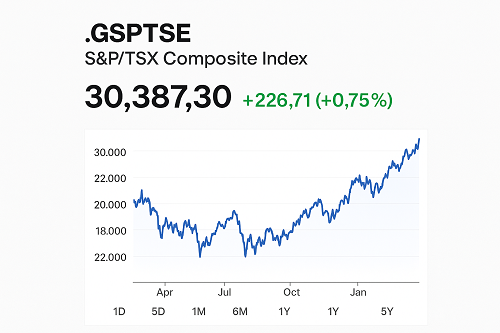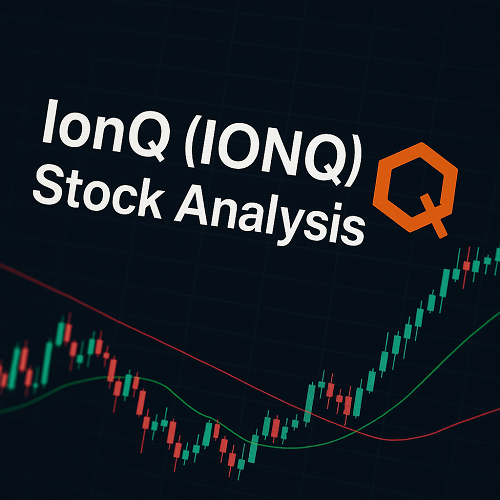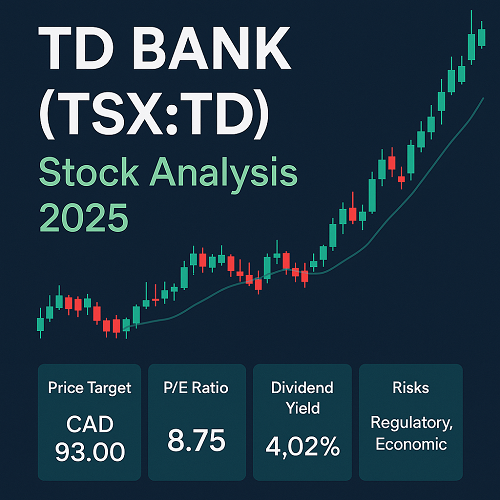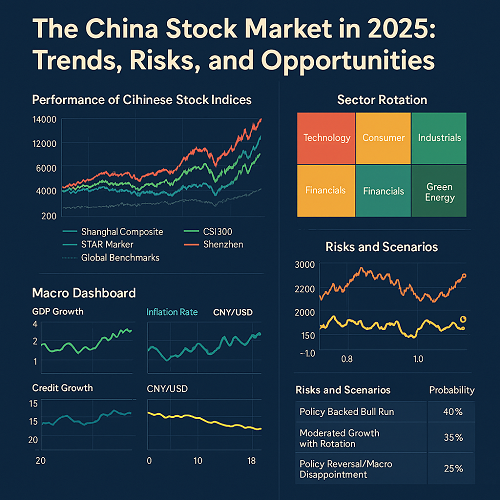What Is the S&P/TSX Composite (“.GSPTSE”)?
The S&P/TSX Composite Index (ticker: GSPTSE) is Canada’s headline equity index. It is the broadest measure of publicly traded large-cap and mid-cap companies listed on the Toronto Stock Exchange (TSX).
- It was introduced in May 2002 when it replaced the older TSE 300 Composite Index.
- The index typically includes 230 to 250 securities, though the exact count can vary with periodic rebalancings.
- By design, the index captures 70–95% of the Canadian equity market capitalization, depending on measurement method.
Index Construction & Methodology
Understanding the methodology is essential for investors, fund managers, and traders:
- Float-adjusted market-cap weighting: The index weights companies by their market capitalization, but only the float shares (i.e. shares available for public trading) are considered.
- Capping rules: To avoid overconcentration, certain constituents may be capped (e.g. no single stock may exceed a fixed percentage).
- Quarterly rebalancing: The index is adjusted quarterly (March, June, September, December) to reflect changes in company size, corporate actions, and liquidity.
- Liquidity & eligibility filters: To qualify, a security must meet minimum trading volume, float thresholds, and must maintain adequate market cap size.
- Sector classification: It employs the Global Industry Classification Standard (GICS), enabling sector breakdowns for analysis.
Comparisons: S&P/TSX Composite vs. S&P/TSX 60 & Other Indices
- The S&P/TSX 60 is a subset focusing solely on the top 60 large-cap companies. It aims to mirror the broader composite but with more liquidity and lower turnover.
- Other related indices:
• S&P/TSX Completion Index (the complement of the 60)
• Capped versions, sector indices, high dividend indices, etc.
Because CNBC’s “.GSPTSE” quote page is primarily a current-value landing, our in-depth article must offer analysis, historical context, trading insights, charts, and forecasts to parameterize value for sophisticated readers.
Historical Performance & Market Trends
Below is a breakdown of key historical trends and performance dynamics for the S&P/TSX Composite.
Long-Term Returns
- Over multi-year horizons, the index has delivered average annualized returns roughly in the mid-single digits (CAD terms), varying with periods of commodity cycles, currency impact, and macro conditions.
- For example, over the last decade, Canadian equities have been buoyed by energy and materials sectors, but have underperformed when commodity prices slump.
Sectoral Drivers
One of the distinctive features of the Canadian equity market is heavy exposure to natural resources, energy, and financials:
- Energy & Materials: Precious metals, base metals, oil & gas firms (e.g. Barrick, Suncor, Teck) are major constituents.
- Financials: Big Canadian banks (RBC, TD, BNS, BMO) and insurance firms are perennial heavyweights.
- Industrials / Utilities / Telecom / Technology: Smaller exposures but growing.
Because of this sector tilt, the TSX Composite is more sensitive to commodity cycles, global demand (especially China), and USD/CAD movements.
Volatility & Drawdowns
- During periods of global distress (e.g. COVID-19 in early 2020), the TSX Composite experienced steep drawdowns.
- Volatility is typically moderate, but can spike in commodity corrections or when currency moves (CAD weakening/strengthening) amplify local equity stress.
Recent Performance Snapshot (2024–2025)
As of mid-2025:
- The index has achieved new highs, pushing above 30,000 CAD territory.
- The 52-week trading range has been approximately 22,227.74 to ~30,476.05 CAD.
- Year-over-year returns have been strong, driven by energy and materials rallying globally.
These trends are important for forecasting and strategy.
Trading & Investment Strategies Around GSPTSE
This section dives into how traders, investors, and institutions can effectively use the TSX Composite in their strategies.
Ways to Gain Exposure
ETFs & Index Funds
- XIC (iShares S&P/TSX Capped Composite ETF)
- ZCN (BMO S&P/TSX Capped Composite ETF)
- XIU (tracks S&P/TSX 60) for large-cap exposure
These vehicles provide passive exposure with low management friction.
Index Futures & Derivatives
- For tactical traders, index futures allow leverage, hedging, and directional plays.
- Options on index futures enable volatility strategies (straddles, spreads) around major market events.
Replication via Constituents
- Advanced institutional investors may replicate the index via a weighted basket of its largest constituents, particularly when managing large capital.
Fundamental / Macro Strategies
- Commodity Cycle Timing: Because the index is sensitive to natural resources, using commodity indices (oil, copper, gold) as leading indicators helps.
- Currency Hedging: The CAD vs USD impact is nontrivial; some funds hedge currency risk.
- Global Growth Exposure: Sensitivity to global demand (especially China, U.S.) implies macro allocations to global ETFs or commodity plays.
- Sector Rotation: Dynamically shifting in/out of energy, materials, financials depending on macro conditions.
Technical & Quant Approaches
- Trend-following: Using moving averages (e.g. 50 / 200 SMA), breakouts, momentum signals to time entries/exits.
- Mean-reversion: In more range-bound periods, identifying overbought/oversold extremes via RSI, Bollinger Bands, or z-score metrics.
- Volatility-based sizing: Adjust position sizes based on realized volatility of the index or its components.
- Machine learning / factor models: Combining value, momentum, quality, and macro features to generate predictive signals.
Risk Management
- Use stop-loss orders or trailing stops to protect against sudden downside.
- Position sizing—never risk more than a small portion (e.g. 1–2%) per trade.
- Monitor diversification: Because of sector concentration, ensure broader diversification if managing multi-asset portfolios.
Technical Analysis & Forecasting
The trading edge often lies in reading technical signals on the TSX Composite. Below is a conceptual framework (no live charts here, but you can embed charting tools on your site).
Key Levels & Patterns to Monitor
- Support zones: Previous consolidation areas, Fibonacci retracements, and high-volume nodes.
- Resistance zones: Prior highs (e.g. 30,400 area), trendline barriers, capping levels.
- Trend channels: Uptrend / downtrend boundaries derived from swing highs/lows.
- Breakouts / breakdowns: Watch for sustained moves beyond key ranges.
Example Forecast Scenarios
| Scenario | Trigger | Potential Target | Risk / invalidation |
|---|---|---|---|
| Bull continuation | Break and close above 30,500 | 31,500 – 32,000 | Fall below 29,800 |
| Range reversion | Fail at resistance | Re-test support at 29,000 | Rally above 30,500 |
| Pullback / correction | Broader market shock | Drop to 28,000–29,000 | Hold 28,000 zone |
Note: These are hypothetical. Real-time charting is needed to validate levels.
Momentum, RSI & Volume Signals
- RSI / MACD / Stochastic: Overbought / oversold zones help flag reversal potential.
- Volume confirmations: Volume surges supporting breakouts or indicating exhaustion.
- Divergences: Price making new highs while momentum indicators lag (bearish divergence) or vice versa.
Intermarket & Correlation Analysis
- Correlate the TSX Composite with commodities (oil, metals), U.S. indexes (S&P 500), and CAD/USD.
- Watch interest rates & yield curves — rising rates can pressure equity valuations.
- Monitor bond yields, inflation data, global growth indicators — they feed into equity sentiment.
SWOT & Risk Analysis
No market is without risks. Here’s a balanced view.
Strengths
- Broad diversification across Canada’s top corporations.
- Liquidity due to large-cap bias and heavy trading volumes.
- Natural resource exposure gives upside when commodity markets recover.
- Stable regulatory environment, strong institutional backing.
Weaknesses & Vulnerabilities
- Sector concentration (energy, banks, materials) leads to sensitivity to commodity cycles and credit cycles.
- Exchange rate risk (foreign capital flows into / out of Canada).
- Exposure to global downturns, especially in U.S. and China.
- Potential for regulatory or tax policy shifts affecting corporate profits.
Opportunities
- Global ESG and sustainable investing flows into Canadian “clean energy,” metals, or resource-adjacent firms.
- Increased derivative / ETF products tied to TSX could expand liquidity.
- Growth in technology, health, and diversification away from pure resource sectors.
Risks / Threats
- Sharp commodity price collapses or global recession.
- High inflation and rising interest rates putting pressure on equity multiples.
- Foreign investor withdrawal or capital flight.
- Corporate governance or environmental risk particularly in mining / energy sectors.
How to Embed This Into Your Website for SEO Domination
To help this article outrank the CNBC quote page, here are some SEO best practices and structural tips:
- Target Keywords & Phrases
– Primary: “.GSPTSE”, “S&P/TSX Composite index”, “TSX Composite index live quote”, “GSPTSE forecast”
– Secondary: “TSX Composite ETF”, “TSX index trading strategy”, “Canadian stock index analysis”
– Long-tail: “how to trade GSPTSE index in Canada”, “TSX Composite technical analysis 2025” - Optimized Title & Meta Tags
– Title example: “GSPTSE (.GSPTSE) — Complete Guide to the S&P/TSX Composite Index (Live Quote, Forecast, Strategy)”
– Meta description summarizing value (live quote, technicals, historical analysis) within ~155–160 characters. - Structured Headings (H1 / H2 / H3 / H4)
– Use H1 for the main title, H2 for major sections (What Is, History, Strategy, Forecast, Risks), H3/H4 for subpoints.
– Use schema markup (e.g.Article,FinancialService,IndexQuote) where possible. - Live Data / Charts
– Embed a live TSX Composite chart or widget (e.g. via TradingView or Investing.com embed).
– Show up-to-the-minute index quotes, day’s high/low, 52w range, etc. - Internal Linking & External References
– Link to other relevant content on your site (e.g. “Canadian ETFs”, “Commodity markets”, “FX markets CAD”).
– Cite reputable external sources (TMX, S&P Dow Jones Indices, Investopedia, central banks). - Rich Content / Visuals
– Use charts, sector breakdown pie charts, historical performance graphs.
– Tables (support/resistance, scenario planning).
– Infographics summarizing methodology, risk/return tradeoffs. - Fresh Updates / Evergreen Refreshes
– Update with quarterly rebalancing changes, new constituents, performance commentary.
– Add occasional blog posts analyzing TSX index moves or events (e.g. commodity shock, central bank decisions). - Performance & Mobile Optimization
– Ensure fast page load, especially for mobile.
– Use responsive design and lazy-loading for charts/images.
By combining deep evergreen content + periodic updates + strong on-page SEO + internal linking, you have a good shot at outranking a lean quote-page like CNBC’s.
Sample Real-Time Snapshot (for Embedding)
Below is a hypothetical template (you would fill dynamically via API):
GSPTSE (S&P/TSX Composite Index)
Current Value: 30,387.30 CAD
Change: + 226.71 (+0.75 %)
Day’s Range: 30,205.05 – 30,476.05
52-week Range: 22,227.74 – 30,476.05
Volume (3-month avg): 251.8 million
YTD Return: +25.3 %
Technical Sentiment: Strong Buy (per moving-average models)
Then you’d attach an interactive chart, news feed, and “Recent Movers / Top Constituents” widget.
Summary & Outlook
- .GSPTSE, or the S&P/TSX Composite Index, is the benchmark for the Canadian equity market.
- Its heavy resource and financial tilt make it distinctively sensitive to commodity cycles and currency dynamics.
- Traders can approach it via ETFs, derivatives, or technical/macro strategies.
- Successful deployment requires vigilance on sector rotations, global cues, risk management, and technical confirmation.
- From an SEO and content standpoint, a rich, updated, interactive guide with forecasting and strategy has strong potential to outrank simpler quote pages.





 XAUT-USD
XAUT-USD  AMD
AMD  MARA
MARA  SHOP
SHOP  BULL
BULL  CL=F
CL=F